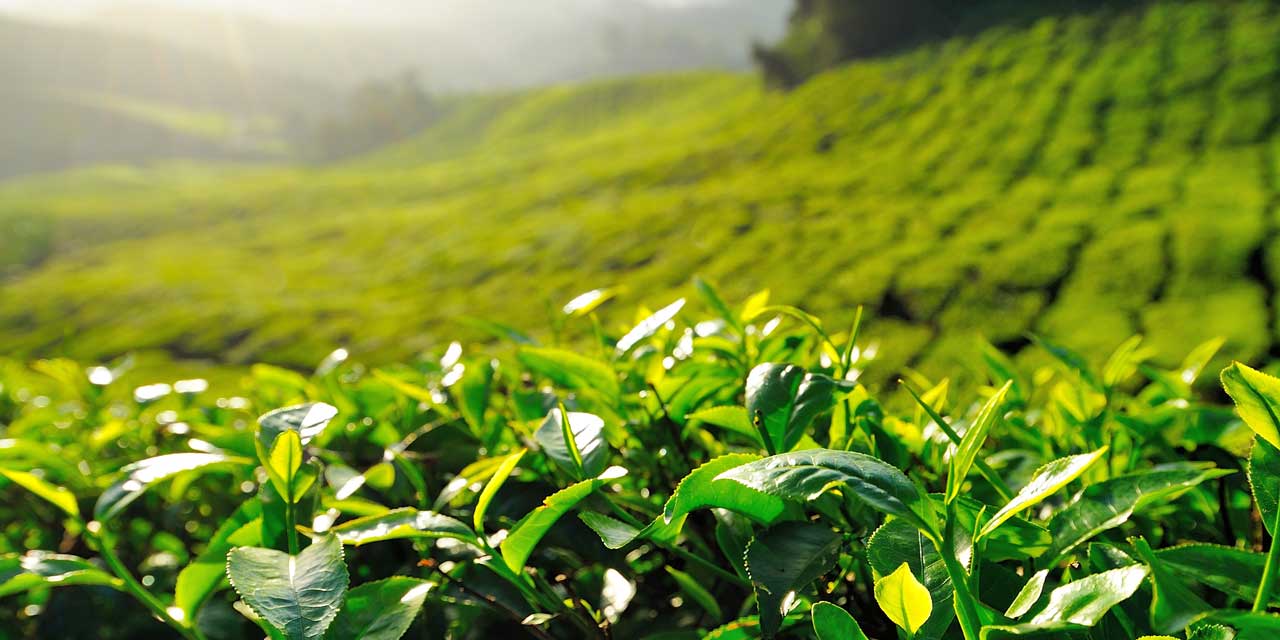Green tea benefits
The healing, beneficial effect of green tea is owed mainly to the secondary plant substances (flavonoids) and antioxidants it contains. The main active ingredient is the antioxidant epigallocatechin gallate (EGCG), which makes up about a third of the dry matter in green tea.
Cognitive abilities
Green tea extract, and particularly the amino acid theanine it contains, can help improve memory and cognitive function by strengthening the connection between regions of the cerebral cortex that are critical to working memory.
Prevention of protein deposits / plaque
Neurodegenerative diseases such as forms of dementia (e.g. Alzheimer’s) and Parkinson’s are caused by the formation of amyloid fibrils. The flavonoid epigallocatechin gallate (EGCG) prevents their formation by binding to the native, unfolded polypeptide chains (proteins). As a result, harmless, spherical oligomers are formed instead of the toxic, fibrous amyloid fibrils and protein deposits are prevented or dissolved. According to study results by researchers at the University of Basel, green tea extract has great potential to improve the treatment of neurodegenerative disorders such as dementia.
Flavonoids support metabolic processes
The flavonoids in green tea have a positive effect on a large number of metabolic processes in the human body, for example catechins have a positive effect on cholesterol levels (LDL is reduced, HDL remains). Flavonoids are also said to reduce the risk of cardiovascular disease and strengthen the immune system.
Anti-inflammatory and antioxidant effect
The catechin tannins in green tea have an antimicrobial, antiviral, antibacterial, anti-inflammatory, anticoagulant and strong antioxidant effect. As antioxidants, they can scavenge reactive oxygen compounds in the body. These are jointly responsible for the development of cancer. Its anti-inflammatory effect also calms the gastrointestinal tract, for example in the event of diarrhea, and is generally effective against all types of inflammatory diseases.
Despite all these beneficial health effects, green tea extract must be dosed consciously, as recent studies have looked at the connection between liver damage and high blood pressure and an overdose of green tea extract (and the catechins it contains).
Micronutrients and phytochemicals in green tea extract:
Amino acids
Theanine, isoleucine, leucine, lysine, methionine, cysteine, phenylalanine, tyrosine, threonine, tryptophan, valine, arginine, histidine, alanine, aspartic acid, glutamic acid, glycine, proline, serine, uric acid, purine.
Fibre
Poly-pentoses, poly-hexoses, poly-uronic acid, cellulose, lignin.
Minerals
Sodium, potassium, calcium, magnesium, phosphorus, sulfur, chloride.
Trace elements
Iron, zinc, copper, manganese, fluoride, iodide.
Unsaturated fatty acids
Hexadecenoic acid/palmitoleic acid, octadecenoic acid/oleic acid, omega 6 fatty acids (octadecadienoic acid/linoleic acid), omega 3 fatty acids (octadecatrienic acid/linolenic acid).
Vitamins
Vitamin A, vitamin C, vitamin E (alpha tocopherol equivalent), vitamin E (alpha tocopherol), vitamin B1 (thiamine), vitamin B2 (riboflavin), vitamin B3 (niacin, nicotinic acid), vitamin B3 (niacin equivalent), vitamin B5 (pantothenic acid), vitamin B6 (pyridoxine), vitamin B9 (folic acid), vitamin B12, vitamin K.
Phytochemicals / flavonoids
Epigallocatechin gallate (EGCG), epicatechin, epicatechin gallate, epigallocatechin, kaempferol, quercetin, myricetin (phytochemicals are non-nutritive bioactive substances with health-promoting effects).
Interesting facts about green tea
The history of green tea in China began about 4700 years ago, but for a long time it was reserved for the imperial court. Initially, tea was considered only as a medicine. A respected Chinese surgeon recommended tea in the third century B.C. as an effective means of increasing alertness and the ability to concentrate.
During the Tang Dynasty (618-907) tea became more and more established as a luxury food. Buddhism, which was spreading in China during this time, also helped the invigorating tea to become more and more popular not only among the Chinese population but also in Asian countries such as Japan or Korea. The Buddhist monks used tea not only as a medicine but also to stay awake during their hours of meditation and to aid in digestion.
How green tea made its way to Europe
In Europe, green tea and tea were completely unknown until the 16th century. It was first mentioned in a letter from a Portuguese missionary in the Far East to the King of Portugal in 1569 as a medicinal drink, and the Portuguese and Dutch merchant fleet brought the herbal tea in the 16th century for the first time to Europe. From the end of the 17th century, English immigrants made tea increasingly popular in North America.
Green tea versus black tea
Green tea and black tea are made from the same plant. Only the processing of the leaves makes the difference. Black tea is fermented, which destroys many of the valuable ingredients. Green tea, on the other hand, is made by first air-drying the leaves of the tea plant (botanical: Camellia sinensis) and then roasting them (more likely in China) or steaming them (more likely in Japan). This prevents oxidation, which preserves the healthy nutrients and powerful antioxidants (polyphenols) and preserves the green color of the leaves. To produce green tea extract, the tea leaves are then crushed and ground into a powder.
